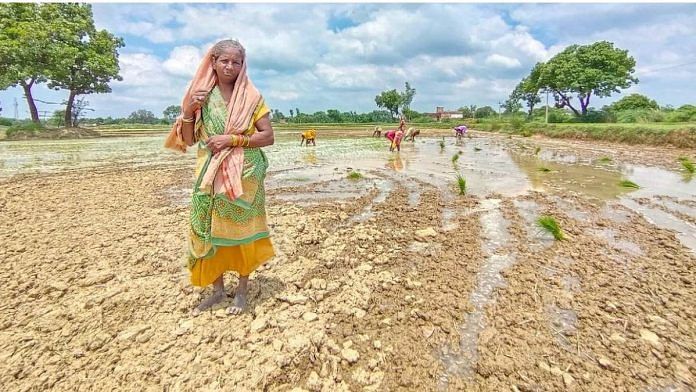Thank you dear subscribers, we are overwhelmed with your response.
Your Turn is a unique section from ThePrint featuring points of view from its subscribers. If you are a subscriber, have a point of view, please send it to us. If not, do subscribe here: https://theprint.in/subscribe/
Regenerative Farming 2.0 blends time‑tested practices like keeping soils covered and minimizing disturbance with modern tools that let farmers measure outcomes and get paid for them. That data layer is what turns good stewardship into better margins, stronger resilience, and credible climate claims.
What exactly is “regenerative”?
Most frameworks boil down to five principles: keep soil covered, minimize disturbance, maximize diversity, maintain living roots year‑round, and integrate livestock where possible. These practices aim to improve soil health, water retention, biodiversity, and farm profitability over time. General Mills’ farmer self‑assessment and Field to Market’s guidance reflect these pillars.
Why is adoption accelerating now?
- Market momentum though estimates vary. One analysis, Precedence Research, pegs the regenerative agriculture market at $1.52B in 2025 with a path to $5.77B by 2034. Another counts $12.66B in 2024 and projects $57.16B by 2033. What’s consistent: North America leads and growth is rapid.
- Brand demand. Food companies are tying procurement to measurable outcomes. General Mills committed to advance regenerative practices on 1 million acres by 2030 and collaborates with Walmart on 600,000 acres. McDonald’s just announced a $200M seven‑year initiative to support regenerative grazing across up to 4 million U.S. acres.
- Policy signals. In Europe, CAP eco‑schemes channel a share of farm payments to climate‑ and soil‑positive practices. In the U.S., policy is more fluid: USDA canceled the $3B Partnerships for Climate‑Smart Commodities in April 2025 while indicating some projects may continue under revised criteria so private and state programs matter more than ever.
- Economics. Better water use, reduced inputs, and resilience to drought/floods protect margins; finance programs are beginning to reward measured outcomes.
What’s “Regenerative Farming 2.0” in practice?
Think principles and precision.
- Soil & crop sensing. In‑field sensors and integrated irrigation let growers water by need rather than by calendar; case studies report 20-40% water savings and yield gains, and integrations (e.g., CropX and WiseConn/Talgil) enable automated control.
- Satellites, models, and MRV. Remote sensing and agronomic models feed measurement, reporting, and verification (MRV) platforms so growers and buyers can validate outcomes at scale.
- Variable‑rate & decision support. Prescription maps for irrigation and nutrients translate measurements into action saving water and optimizing inputs.
- Biologicals & controlled‑release fertilizers (CRFs). Seed‑applied microbes and CRFs improve nutrient use efficiency and plant vigor, aligning with regen goals to cut losses and reduce passes.
Carbon markets: promise and growing pains
Carbon income is real but uneven. Indigo Ag has issued 1M registry‑approved soil credits (Climate Action Reserve) across multiple “carbon crops,” with buyers including Microsoft. At the same time, Nori a blockchain‑based marketplace, shut down in 2024 as the voluntary market cooled. Translation: pick programs with clear MRV, conservative baselines, and reputable registries.
Companies to watch
General Mills Enterprise‑level acreage commitments and farmer tools
GM is advancing regen across 1M acres by 2030 and offers a farmer self‑assessment to benchmark practices. “We are about halfway there, with 500,000 acres engaged,” said the company’s regen agriculture director in 2024.
ICL Group Nutrient efficiency tech and startup investment
ICL’s controlled‑release fertilizers and biostimulants support nutrient use efficiency and fewer field passes; its Planet Startup Hub co‑develops and funds ag‑tech that complements regenerative systems.
Patagonia Provisions Market pull for perennials
By procuring and promoting Kernza® (a deep‑rooted perennial grain), Patagonia creates stable demand for crops that improve water quality and potentially store more carbon in soils.
CropX Soil intelligence and irrigation automation
Soil sensors and software help growers irrigate at the right time and rate. Case studies show double‑digit water savings and ROI; integrations with WiseConn and Talgil connect recommendations directly to control systems.
Indigo Ag Registry‑issued ag soil carbon at scale
Indigo has progressed through multiple carbon “crops,” with nearly 1M credits issued through the Climate Action Reserve and expanding Scope 3 programs with grain buyers.
Note on Nori: Once a visible marketplace for soil‑carbon credits, Nori closed in 2024 a reminder that program durability and credit integrity matter.
How farmers can start (and de‑risk the transition)
- Define outcomes first. Pick 2 3 priorities (e.g., water use, nutrient losses, soil carbon) and align practices to those outcomes.
- Choose an MRV partner. Make sure your data can populate buyer scorecards and reporting platforms like Regrow support multi‑crop, multi‑region MRV.
- Pair practices with tech. Start with cover crops and reduced tillage, then add soil sensing/variable‑rate to reduce water and inputs without sacrificing yield.
- Tap outcome‑based finance. Explore performance‑linked loans (e.g., Environmental Defense Fund’s Regenerative Agriculture Financing Program) and supply‑chain insetting programs.
- Watch the policy landscape. EU eco‑schemes can top up income; U.S. federal programs are shifting private contracts (and state programs) can provide continuity.
The bottom line
Regenerative Farming 2.0 isn’t a buzzword, it’s a systems upgrade: proven agronomy plus data you can take to the bank. With outcome‑oriented tools, growers can reduce inputs, build resilience, and qualify for contracts and financing that reward measurable progress.
Written by-Jacobo Weizenblut, CEO of TradingADR.com. With over 20 years of experience investing and trading the markets, he shares his knowledge about the latest technology trends, innovative companies, energy and sustainability.
These pieces are being published as they have been received – they have not been edited/fact-checked by ThePrint.


